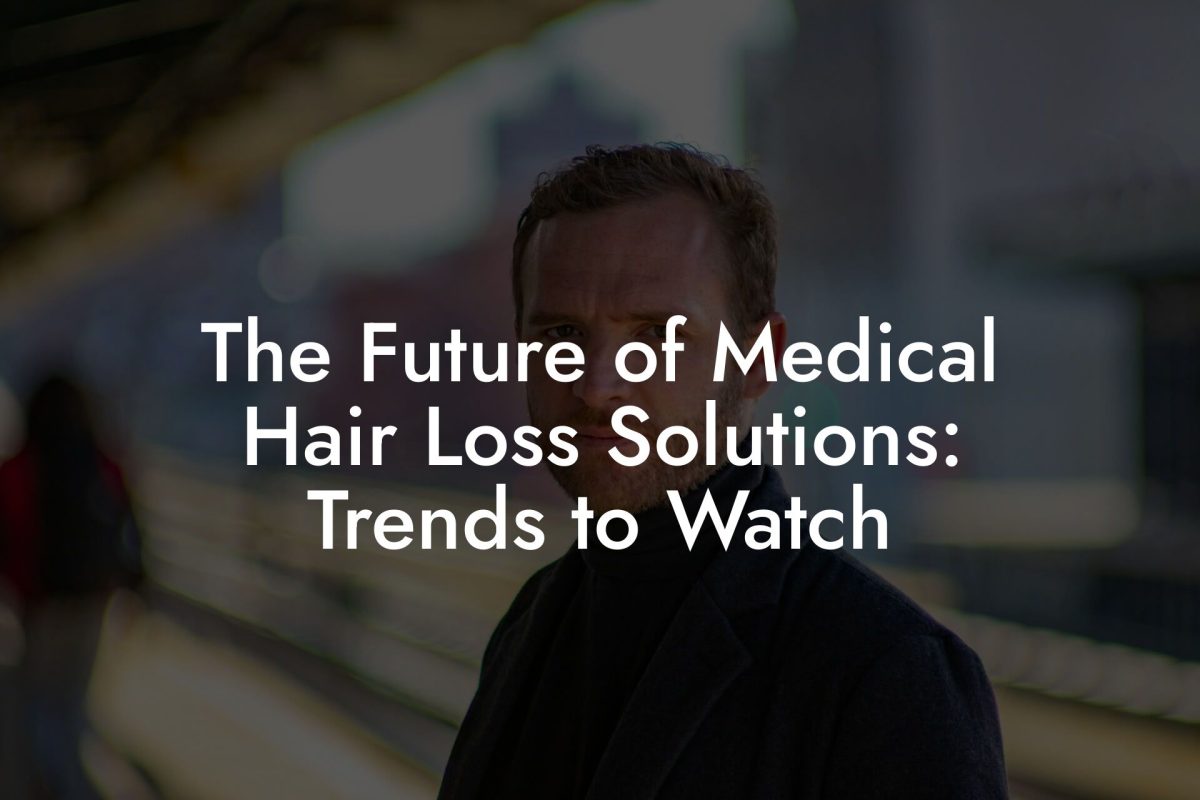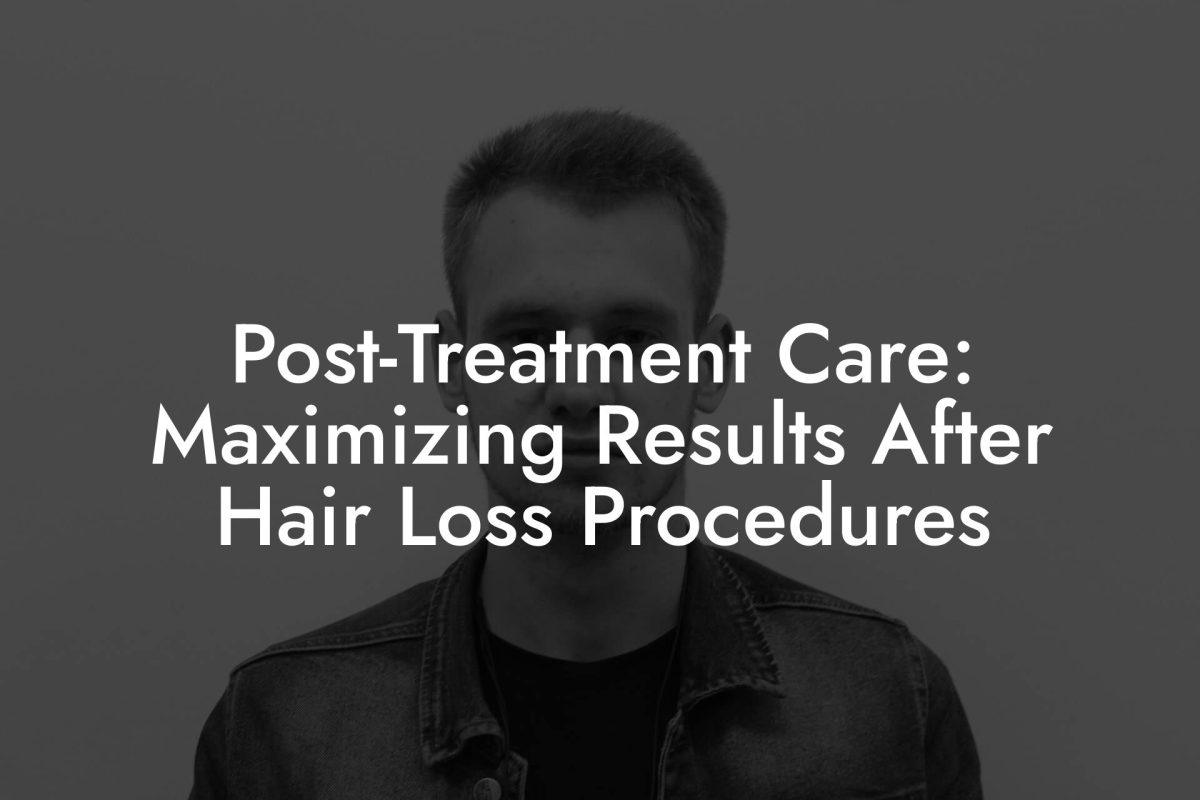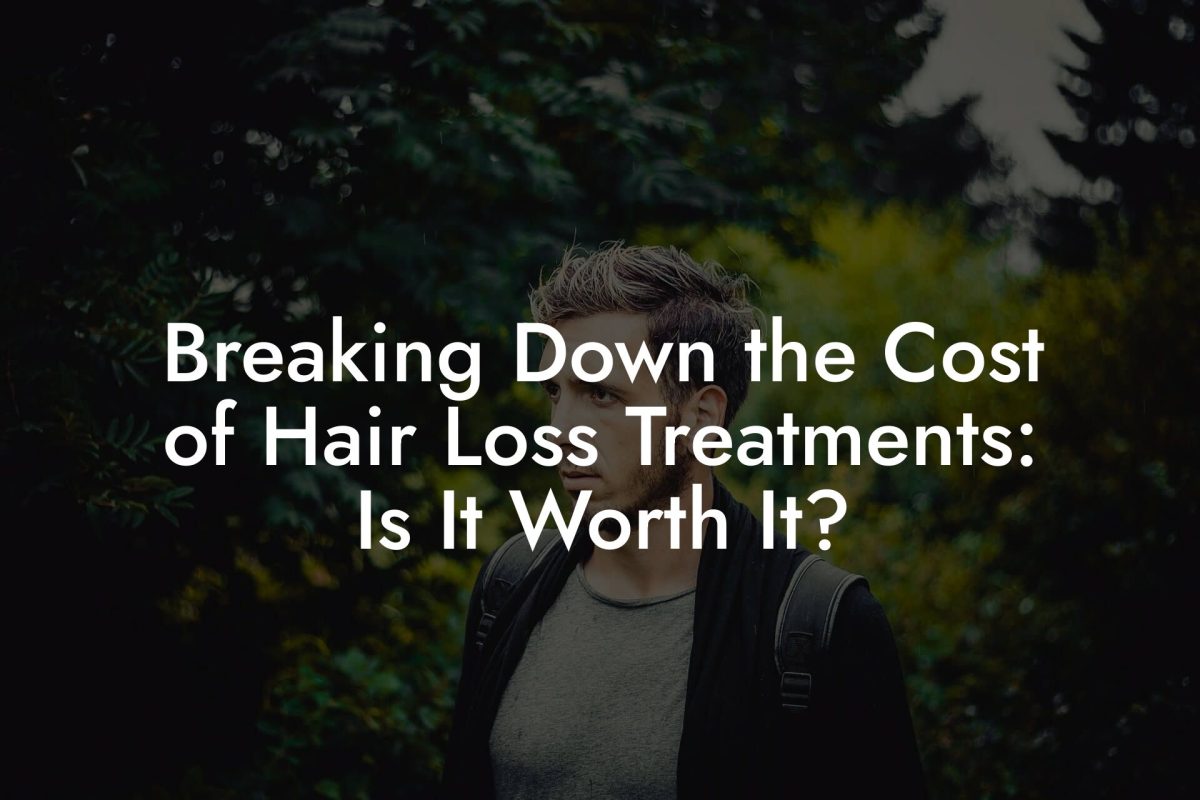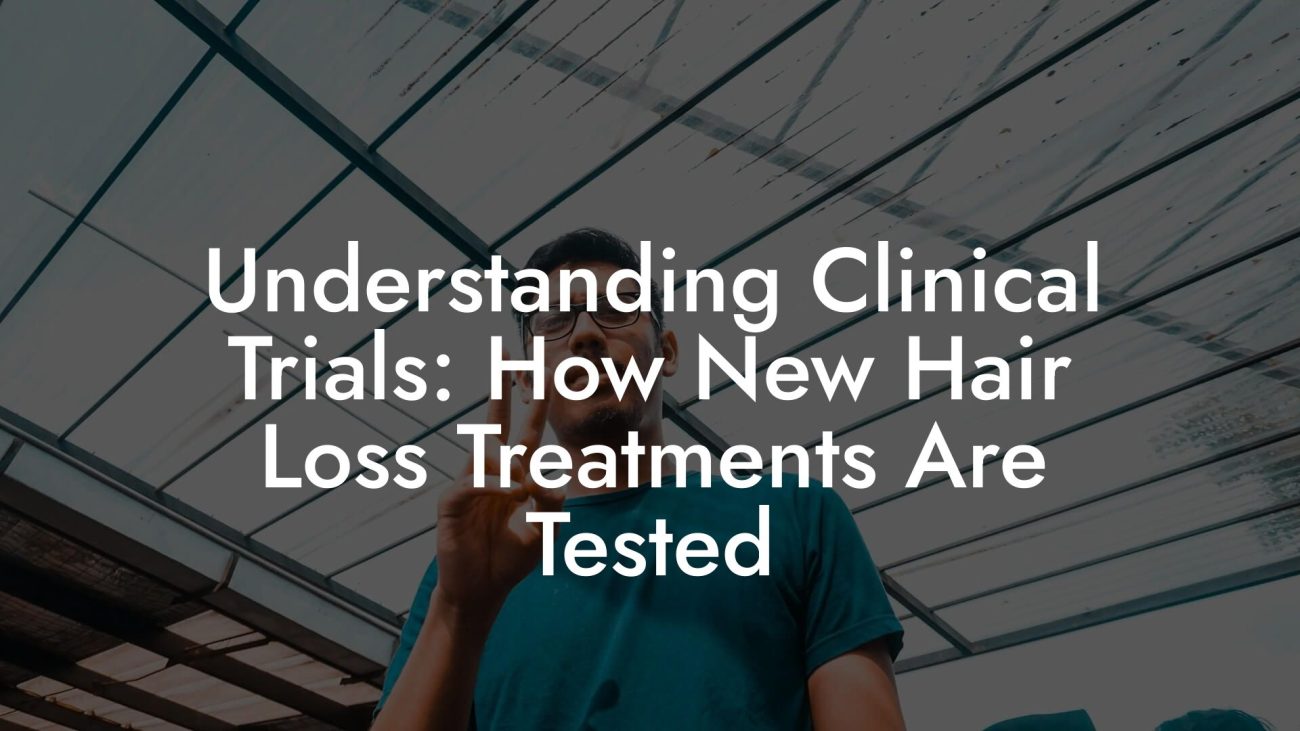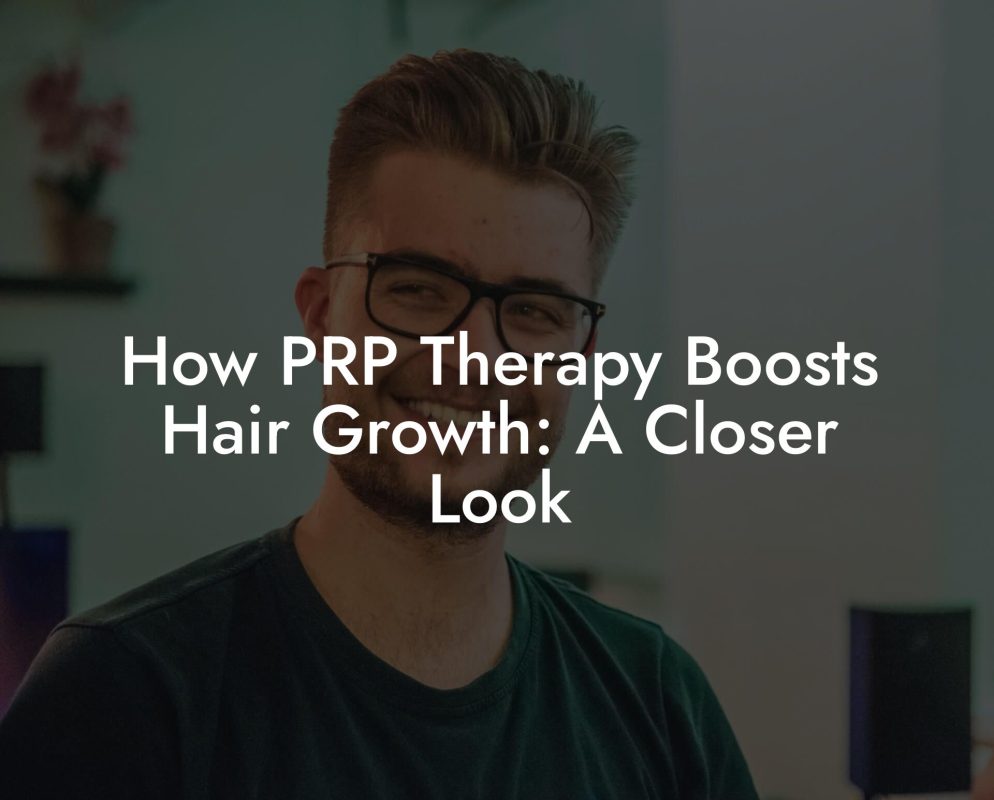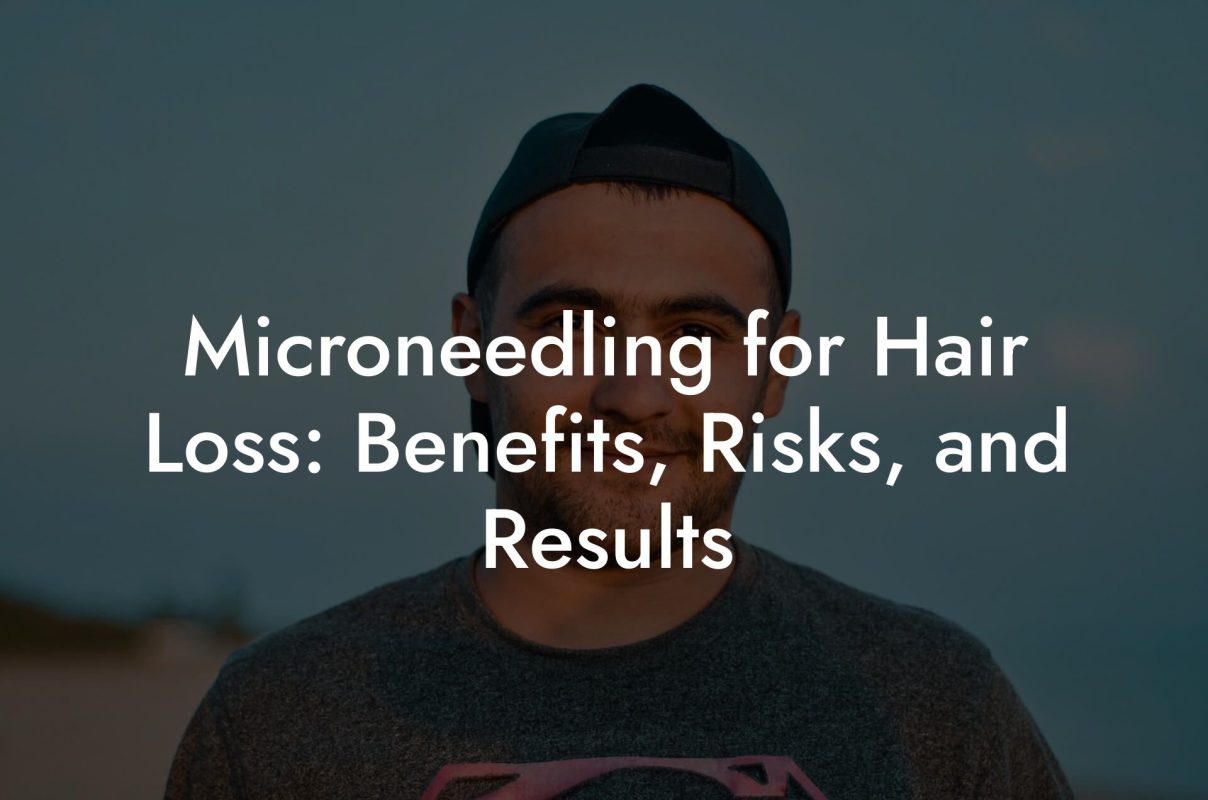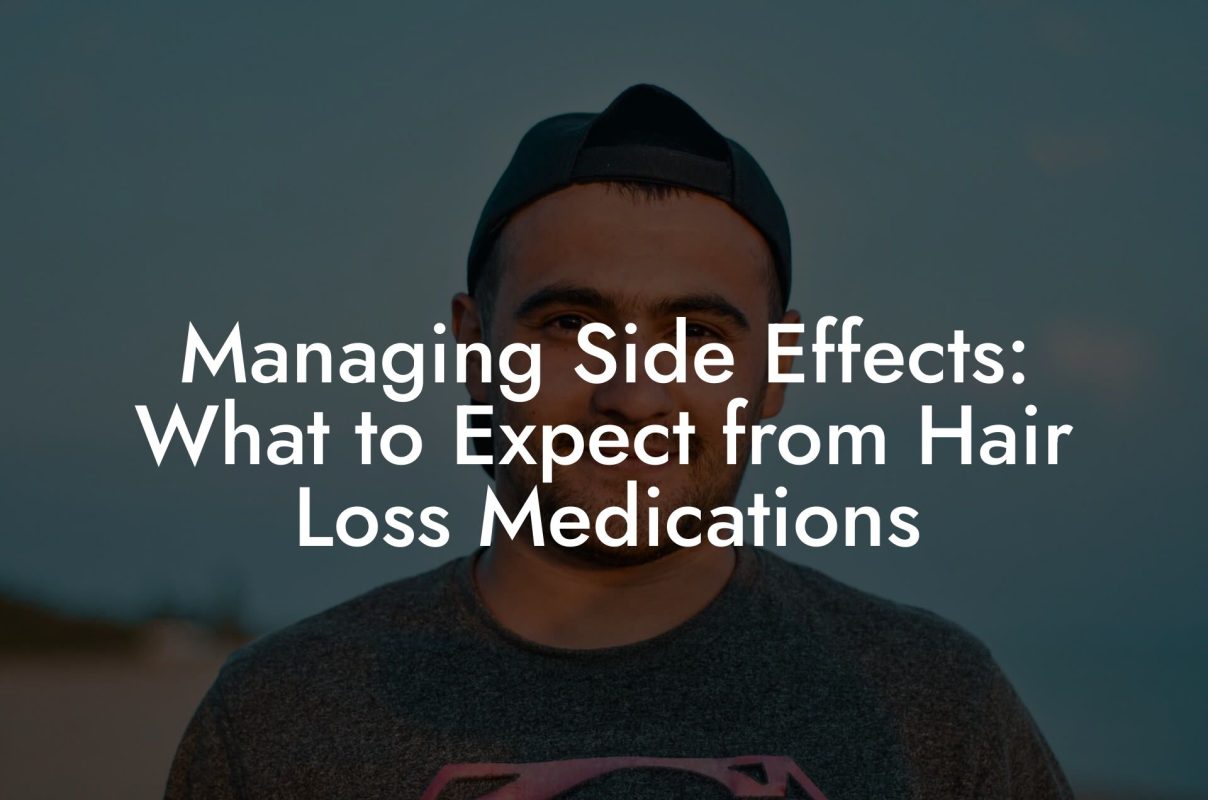Hair Loss Library
The Latest in Hair Loss Research: Emerging Medical Treatments
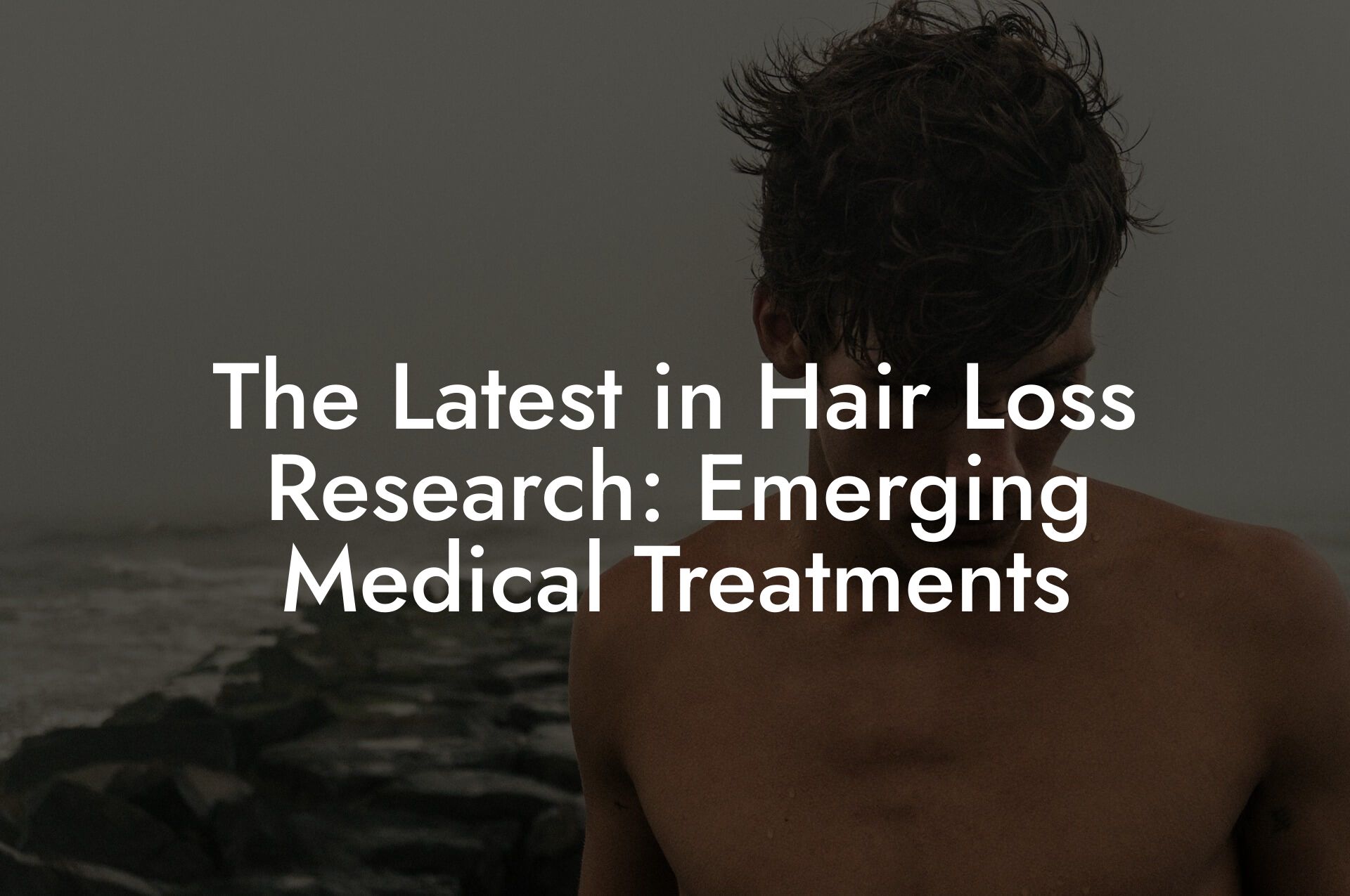
Imagine waking up one day to discover that your hairline is staging its own rebellion—quietly receding in protest of time, stress, and an overload of life’s crazy moments. Welcome to the latest frontier in hair loss research: emerging medical treatments that are making waves for men who want to reclaim their crowning glory without enduring awkward, expensive consultations. At Mane Matrix, we blend cutting-edge science with a no-nonsense, straightforward approach to help you understand exactly what’s on the horizon for hair loss treatment. Buckle up as we dive into the science, the tech, and even a dash of humor to transform your journey from hair loss woes to hair restoration wins.
Understanding Hair Loss: More Than Just a Balding Problem
Hair loss isn’t just about patchy spots on your scalp or a receding hairline that shouts “I’m aging.” For many men, especially millennials and Gen Z, it’s a narrative woven with self-esteem, confidence, and even identity. And while your buddies might joke about “lawn mowing” your head, the science behind hair loss is anything but a laughing matter.
Hair loss research has evolved from relying solely on minoxidil and finasteride to exploring a fascinating array of treatments that work on cellular levels. We’re talking about everything from platelet-rich plasma (PRP) treatments to low-level laser therapy, and even promising results with stem cell therapy. The focus is shifting to not just halting hair loss but actively stimulating new hair growth by addressing the root (pun intended!) causes.
The complex tapestry of hair loss includes genetics, hormonal imbalances, environmental factors, and even your diet. And while you might feel like you’re stuck with your predetermined destiny, emerging treatments are giving you cause for hope. This isn’t just about battling baldness—it’s about rewriting the future of hair restoration.
Conventional Treatments: The Tried and True Methods
Before we get into the shiny, futuristic treatments on the horizon, let’s give a nod to the classic players in the hair restoration field. For decades, the go-to treatments have included FDA-approved medications that lower dihydrotestosterone (DHT) levels and stimulate blood flow to the scalp. Minoxidil (Rogaine) and finasteride (Propecia) have become household names in the battle against androgenetic alopecia, also known as male pattern baldness.
Minoxidil was originally developed as a blood pressure medication, but its ability to prolong the anagen phase (the growth phase of hair) made it perfect for combating hair loss. Finasteride, on the other hand, works internally to reduce the production of DHT, a hormone known to shrink hair follicles. While both treatments have shown success for many, they aren’t without challenges. Some men experience side effects ranging from scalp irritation to mood changes, sparking the search for newer, more refined options.
These conventional treatments have paved the way for modern researchers to think outside the box. Think of them as the sturdy foundation upon which cutting-edge therapies are being built, combining scientific breakthroughs with an understanding of what men really need—a solution that’s effective, accessible, and doesn’t make you feel like you’re living in a lab.
Emerging Medical Treatments: New Frontiers in Hair Restoration
Strap in for the future—the latest advancements in hair loss research are transforming the landscape of male hair restoration. Emerging treatments aim not only to slow down or stop hair loss but to rejuvenate the scalp environment and activate dormant hair follicles. Let’s break down some of the most promising innovations.
Platelet-Rich Plasma (PRP) Therapy
PRP therapy involves drawing a small amount of your own blood, processing it to concentrate the platelets, and then injecting it into your scalp. Why platelets? They’re packed with growth factors that encourage tissue repair and stimulate new hair growth. Studies have shown that PRP can improve hair density and thickness, making it a favorite among men looking for natural, autologous treatments.
The best part? Since it uses your own blood, the risk of rejection or allergic reactions is minimal. However, multiple sessions are usually required, and results can vary. Think of it as giving your scalp a power-packed smoothie, rich in nutrients and ready to energize those tired follicles.
Low-Level Laser Therapy (LLLT)
Also known as red light therapy or cold laser treatment, LLLT is an intriguing option that uses specific wavelengths of light to stimulate cellular activity. The theory is that light energy can boost circulation and encourage hair follicles to enter the growth phase. It’s a non-invasive, painless treatment that can be done in the comfort of your home with the right device.
While devices like laser combs and caps are becoming more popular, consistency is key. Results often appear gradually over several months, but many users have reported noticeable improvements in hair volume and quality. It’s almost like giving your head a spa day, but with science on your side.
Stem Cell Therapy and Regenerative Medicine
Imagine a treatment that essentially rewinds the clock on your hair follicles. Stem cell therapy is still in its research phase, but early studies suggest that using stem cells to rejuvenate hair follicles could be a game-changer. By harnessing the regenerative power of stem cells, researchers hope to not only halt hair loss but reverse it.
This area of regenerative medicine focuses on creating a more hospitable environment for hair growth by repairing damaged follicular structures and promoting the natural cycle of hair regeneration. Although still experimental, the promise of stem cell-based treatments is compelling, potentially offering a one-stop solution to restore your youthful mane.
JAK Inhibitors: Repurposing Immunotherapy for Hair Loss
In a surprising twist, medications originally designed to treat autoimmune conditions are now being eyed as potential treatments for hair loss. Janus kinase (JAK) inhibitors work by interfering with inflammatory pathways that can damage hair follicles. Preliminary research has shown positive results in treating conditions like alopecia areata, an autoimmune form of hair loss.
Although the use of JAK inhibitors remains off-label for most types of hair loss, the early data is encouraging. For those who have tried everything else with minimal results, this represents a beacon of hope—turning the tables on hair loss through innovative pharmacological means.
Microneedling Combined with Topical Therapies
Microneedling involves creating tiny punctures in the scalp to stimulate collagen production and increase the absorption of topical treatments. When combined with active compounds such as minoxidil or novel peptides, microneedling shows an increased potential to promote hair growth. The process kick-starts a natural healing process that can help revive dormant follicles.
This technique is gaining traction for its dual benefits: it not only potentially enhances the effects of topical treatments but also stimulates the underlying skin to produce growth factors on its own. It’s a bit like giving your scalp a gentle massage with a side of scientific wizardry.
Advanced Research Trends: What’s on the Horizon?
The world of hair loss research is dynamic, with new clinical trials and studies emerging every year. Innovations in the field are not just about adding more treatments to the list; they’re about understanding the complex biology behind hair growth and loss on a deeper level. Here’s a sneak peek into what the future might hold:
Gene Editing and CRISPR Technology
One of the most exciting areas of emerging research is gene editing, particularly using CRISPR technology. Scientists are beginning to unravel the genetic components of hair loss, with the hope of correcting mutations that cause androgenetic alopecia. While this technology is still in its infancy, it holds immense potential—imagine a future where hair loss can be treated at the genetic level with pinpoint precision.
Gene editing could one day pave the way for personalized therapies that target the specific genetic factors contributing to your hair loss. It’s high-tech, cutting-edge research that might sound like something straight out of a science fiction movie, but the reality is closer than you think.
Personalized Medicine: Tailoring Treatments Just for You
As our understanding of hair loss becomes more refined, the future of treatment lies in personalization. By combining genetic testing with advanced diagnostic tools, clinicians are developing custom-tailored treatment plans that address your unique pattern of hair loss. This approach moves away from the one-size-fits-all model and towards a future where your hair restoration plan is as unique as your fingerprint.
Personalized medicine can optimize the effectiveness of treatments by considering factors like your hormonal profile, genetic predispositions, lifestyle, and even your stress levels. The result? A highly customized plan that maximizes results while minimizing side effects.
Nanotechnology and Drug Delivery Systems
Nanotechnology is making its mark in the medical world, and its applications in hair loss treatment are no exception. Researchers are exploring nanoparticle-based drug delivery systems that can efficiently transport hair growth stimulants directly to the follicle. This method ensures that high concentrations of active ingredients are delivered exactly where they’re needed, reducing waste and potentially increasing efficacy.
By integrating nanotechnology, future treatments may offer a more controlled and targeted approach to hair restoration, enhancing the benefits of topical treatments and opening new avenues for innovation in the field.
Biomarkers and Early Detection
Early detection of hair loss could revolutionize treatment outcomes. Ongoing research into biomarkers—biological indicators of hair follicle health—could provide clinicians with the tools they need to diagnose the condition long before the visible signs appear. This proactive approach would allow for early interventions, potentially staving off severe hair loss before it starts.
With early detection and personalized treatments working hand in hand, the future of hair loss research is poised to deliver solutions that are as proactive as they are reactive.
Integrative Approaches: Beyond Pills and Procedures
While medical treatments and technological advances steal the spotlight, a holistic approach to hair restoration is equally important. Your hair health is intricately linked to your overall well-being, so it makes sense to look beyond just pills and procedures.
Lifestyle Modifications
Stress, poor diet, and lack of sleep can all take a toll on your follicles. Making simple lifestyle changes—like incorporating regular exercise, improving your diet, and managing stress—can play a significant role in maintaining a healthy scalp. Think of it as giving your hair the best possible environment to thrive.
Nutritional Boosts for Hair Health
Nourishing your body with the right nutrients is crucial for hair growth. A diet rich in protein, healthy fats, and vitamins (especially vitamin D, biotin, and zinc) supports robust hair health. Superfoods like salmon, spinach, and walnuts can be your secret weapon against hair loss. And yes, indulging in a green smoothie every now and then isn’t just a trendy Instagram moment—it might actually help your hair.
Mindfulness and Stress Reduction
Believe it or not, your brain and your hair are more connected than you might think. Chronic stress can trigger hormonal imbalances that lead to hair loss. Integrative practices such as mindfulness meditation, yoga, and even simple breathing exercises can help keep stress at bay, giving your follicles a better chance to flourish.
Embracing these integrative approaches not only benefits your hair but also enhances your overall quality of life. After all, healthy hair starts from within.
Real-Life Transformations: Case Studies in Emerging Hair Loss Treatments
The proof is in the pudding—or in this case, in the hair. Across the globe, men have been sharing their journeys from thinning strands to fuller, healthier hair. Let’s take a look at several real-life cases where emerging treatments played a key role in turning the tide.
Case Study 1: From Receding Hairline to Renewed Confidence
Meet Alex, a 32-year-old creative professional who was tired of hiding under hats and dodging too many selfies. After trying conventional treatments with little success, he turned to PRP therapy combined with low-level laser treatments. Over a series of sessions, Alex noticed not only increased hair density but also a boost in confidence that transformed his outlook on life. His experience underscores the potential of combining cutting-edge therapies for real-world results.
Case Study 2: Microneedling Magic for Stubborn Alopecia
Then there’s Dan, a 27-year-old tech entrepreneur who was battling alopecia areata. When traditional medications fell short, he experimented with microneedling combined with bespoke topical serums. The process, which involved tiny punctures and a custom blend of hair-stimulating compounds, sparked a noticeable regrowth where he had almost resigned himself to bald patches. His remarkable transformation is proof that sometimes, a little ingenuity goes a long way.
Case Study 3: Embracing the Future with Stem Cell Therapy
For our third case, consider Mike, a 40-year-old fitness coach who wasn’t ready to accept the legacy of male pattern baldness. Intrigued by the promise of regenerative medicine, Mike enrolled in a clinical trial exploring stem cell therapy for hair restoration. Over time, the treatment not only improved his hair volume but also rejuvenated his scalp’s health, symbolizing a perfect blend of medical innovation and personal determination.
These case studies highlight a common message: emerging treatments, when tailored to individual needs, can offer life-changing results. Whether it’s harnessing your own blood for PRP therapy, combining microneedling with active compounds, or even venturing into the promising realm of stem cell therapy, the future of hair loss treatment is brimming with possibilities.
Designing Your Personalized Hair Loss Treatment Plan
Navigating the labyrinth of hair loss treatments can be overwhelming. But the secret is in creating a personalized plan that fits your unique journey. Here are some steps to design your own roadmap to hair restoration success:
Step 1: Comprehensive Assessment
Knowing where you stand is crucial. Start with a thorough assessment by a hair restoration specialist who can evaluate your scalp health, genetic factors, and lifestyle influences. This diagnosis is the bedrock of a treatment plan that’s catered just for you.
Step 2: Define Your Goals
What exactly do you want to achieve? Are you looking for a subtle boost in density, a complete reversal of hair loss, or just stabilization of shedding? Setting clear, realistic goals will give you a target to work towards and keep you motivated along the way.
Step 3: Integrate Conventional and Emerging Treatments
Consider a hybrid approach that includes the best of both worlds. You might combine tried-and-true treatments like minoxidil or finasteride with emerging options such as PRP therapy, low-level laser treatments, or even microneedling. Your journey is uniquely yours, so a multi-modal strategy can address various aspects of hair loss for optimal results.
Step 4: Embrace a Holistic Lifestyle
Remember, no treatment exists in a vacuum. Adopting a healthy lifestyle—managing stress, eating a balanced diet, and ensuring proper sleep—creates a nurturing environment for both your hair and overall well-being.
Step 5: Track, Evaluate, and Adapt
As you progress, keep a log of your treatments, noticeable changes, and any side effects. This ongoing evaluation will help you and your specialist adjust the plan as needed. Trends evolve, and with prolonged dedication, so can your treatment strategy.
A personalized plan is a dynamic roadmap that grows and evolves with you. It’s all about staying informed, being proactive, and never settling for anything less than the best for your hair health.
Resources and Community Support: Your Next Steps
The journey to cutting-edge hair restoration doesn’t have to be a solo expedition. There’s a vibrant community of researchers, clinicians, and everyday guys who are in the same boat—seeking clarity, sharing experiences, and cheering each other on. Whether you’re looking for the latest research papers, trusted clinics specializing in emerging treatments, or simply a community that gets your struggles, there’s a legacy of support available.
At Mane Matrix, we’re committed to connecting you with reliable resources, expert opinions, and innovative solutions that cut through the noise. Look out for webinars, Q&A sessions, and discussion forums that spotlight personal success stories and the science behind the breakthroughs. From detailed guides on PRP and microneedling to insights on how lifestyle tweaks can amplify your treatment outcomes, our goal is to empower you with all the tools needed for your hair restoration journey.
Additionally, we encourage you to stay engaged by following our blog, subscribing to newsletters, or joining interactive social media groups where the conversation around advanced hair loss treatments is as lively as it is informative. Remember, the best treatment plan is one where you’re informed, encouraged, and supported by a community that cares.
Integrating Technology and Innovation into Hair Health
It’s an exciting time to be at the crossroads of beauty, medicine, and technology. With apps that monitor your hair growth progress, wearable devices that track scalp health, and even AI-based analysis that predicts the trajectory of your hair loss, the future is bright—and highly innovative.
These technologies not only offer tangible insights into your treatment’s effectiveness but also facilitate a data-driven approach to managing hair health. Imagine receiving customized tips based on real-time feedback from your scalp, or unlocking a library of video tutorials curated specifically for your hair type. With technology woven into the fabric of hair loss research, you’re not just a passive recipient of treatments; you’re an active participant in your own wellness journey.
The integration of digital platforms with clinical expertise creates a holistic ecosystem where emerging treatments and day-to-day maintenance go hand in hand. It’s all part of the movement to make hair restoration both accessible and engaging for modern men.
FAQ: Your Burning Questions About Emerging Hair Loss Treatments Answered
We know you probably have a ton of questions—after all, navigating the maze of hair loss treatments can feel overwhelming. Here are answers to some of the most frequently asked questions about the latest in hair loss research and emerging medical treatments.
1. What makes emerging hair loss treatments different from conventional options?
Emerging treatments go beyond traditional medications by leveraging innovative technologies such as PRP therapy, low-level laser therapy, stem cell technology, and even gene editing. They aim to rejuvenate hair follicles and create a conducive environment for new growth rather than just slowing hair loss.
2. Are treatments like PRP therapy and stem cell therapy safe?
Yes, many of these treatments use your own cells or naturally occurring processes in the body. For instance, PRP therapy uses your own blood to stimulate hair growth, significantly lowering the risk of allergic reactions. However, it’s important to consult with a specialist to determine the best approach for your individual needs.
3. How long does it take to see visible results from these emerging treatments?
Results vary depending on the treatment and your unique physiology. Typically, it may take three to six months of consistent treatment before you notice significant changes in hair density and quality.
4. Can emerging treatments be combined with conventional medications?
Absolutely. Many experts recommend a combination approach to maximize the benefits. For example, while you might continue using FDA-approved medications like minoxidil or finasteride, integrating treatments like microneedling or low-level laser therapy can enhance the overall effectiveness.
5. How do lifestyle factors influence the effectiveness of these treatments?
Your everyday habits play a huge role. A balanced diet, regular exercise, proper sleep, and effective stress management can all boost the performance of any treatment. Ultimately, treating hair loss holistically ensures that you’re creating the best possible environment for hair regrowth.
6. Are these treatments experimental, or are they widely available?
Many emerging treatments are moving from experimental stages to broader clinical use. While some, like PRP and microneedling, are already widely available, others—such as gene editing and stem cell therapies—are still being refined in clinical trials. Check with a hair restoration specialist to see which options are best suited for you.
7. Can these advanced treatments address all types of hair loss?
Most of these treatments are designed to tackle androgenetic alopecia, but research is also exploring their effectiveness for other forms like alopecia areata. A customized diagnosis is essential to determine which treatment is most relevant to your specific situation.
8. Is there a risk that these treatments might not work?
As with any medical treatment, results can vary. Factors such as genetics, the extent of hair loss, and individual health conditions all play a role. It’s important to have realistic expectations and to work closely with a specialist who can tailor the treatment plan for optimal outcomes.
These answers only scratch the surface of the evolving field of hair loss research. Staying informed and consulting with experts is the best way to navigate your options.
Your Journey to a Bold and Future-Ready Mane
As we stand on the brink of a new era in hair loss research, the promise of emerging medical treatments is paving the way for innovative, personalized, and effective solutions. Whether you’re navigating the challenges of a receding hairline or exploring the latest breakthroughs in regenerative medicine, remember that this journey is all about you—your confidence, your style, and your unique story.
Each treatment option—from conventional solutions to the most advanced therapies like PRP, low-level laser therapy, stem cell technology, and even gene editing—offers a glimpse into a future where hair loss is not an inevitable fate but a manageable, modifiable condition. Embrace the advances, keep your mind open, and stay connected with experts and communities that are just as passionate about hair health as you are.
At Mane Matrix, our mission is to bring you the latest insights and breakthrough research in a way that’s engaging, transparent, and real. Get ready to explore, experiment, and elevate your hair restoration journey with treatments that blend science, technology, and a bit of that modern, millennial spirit.
The future of hair health is here—and it’s not just about combating hair loss. It’s about reclaiming your confidence, redefining how you see yourself, and stepping boldly into a future where innovation meets personal empowerment. Your mane, your rules—here’s to a future that’s as vibrant and unstoppable as you are.
If you loved this article... Dive deeper into the world of mens hair loss with our most popular sections. If there is anything you think is missing or anything you would love for us to write about, just give us a shout.
Prescription Solutions: The Best Medications for Men’s Hair Loss
Minoxidil & Beyond: Exploring Topical Treatments for Hair Regrowth
How Finasteride Works: The Science Behind This Hair Loss Blocker
Platelet-Rich Plasma (PRP) Therapy: Is It the Answer to Hair Loss?
Hair Transplant 101: A Beginner’s Guide for Men
Exploring Laser Therapy: Non-Invasive Options for Hair Regrowth
The Pros and Cons of Oral Hair Loss Medications
New Frontiers in Hair Loss Treatment: Stem Cell Therapy Explained
Surgical vs. Non-Surgical: Which Hair Loss Treatment Is Right for You?
Understanding Combination Therapy for More Effective Hair Regrowth
How to Choose the Right Hair Loss Clinic: Expert Tips
Exploring Off-Label Treatments: What’s Worth Trying for Hair Loss?
Managing Side Effects: What to Expect from Hair Loss Medications
The Latest in Hair Loss Research: Emerging Medical Treatments
Microneedling for Hair Loss: Benefits, Risks, and Results
How PRP Therapy Boosts Hair Growth: A Closer Look
The Role of DHT in Hair Loss and How Medications Counteract It
Customized Treatment Plans: Tailoring Hair Loss Solutions for You
Understanding Clinical Trials: How New Hair Loss Treatments Are Tested
Breaking Down the Cost of Hair Loss Treatments: Is It Worth It?
How to Prepare for a Hair Transplant: A Step-by-Step Guide
Post-Treatment Care: Maximizing Results After Hair Loss Procedures
A Doctor’s Perspective: When to Consider Medical Hair Loss Treatments
Success Stories: Real Men Share Their Hair Restoration Journeys
The Future of Medical Hair Loss Solutions: Trends to Watch





